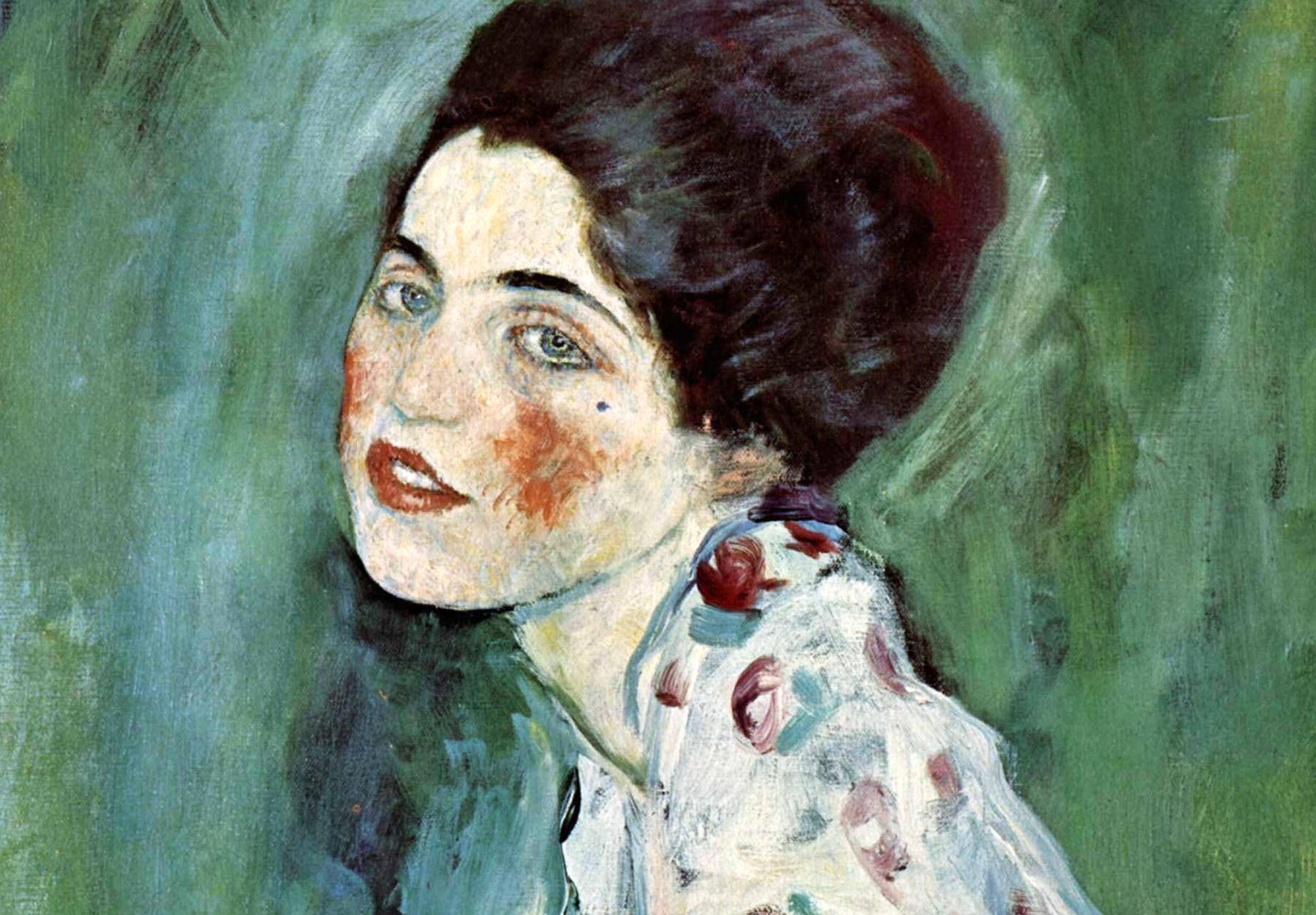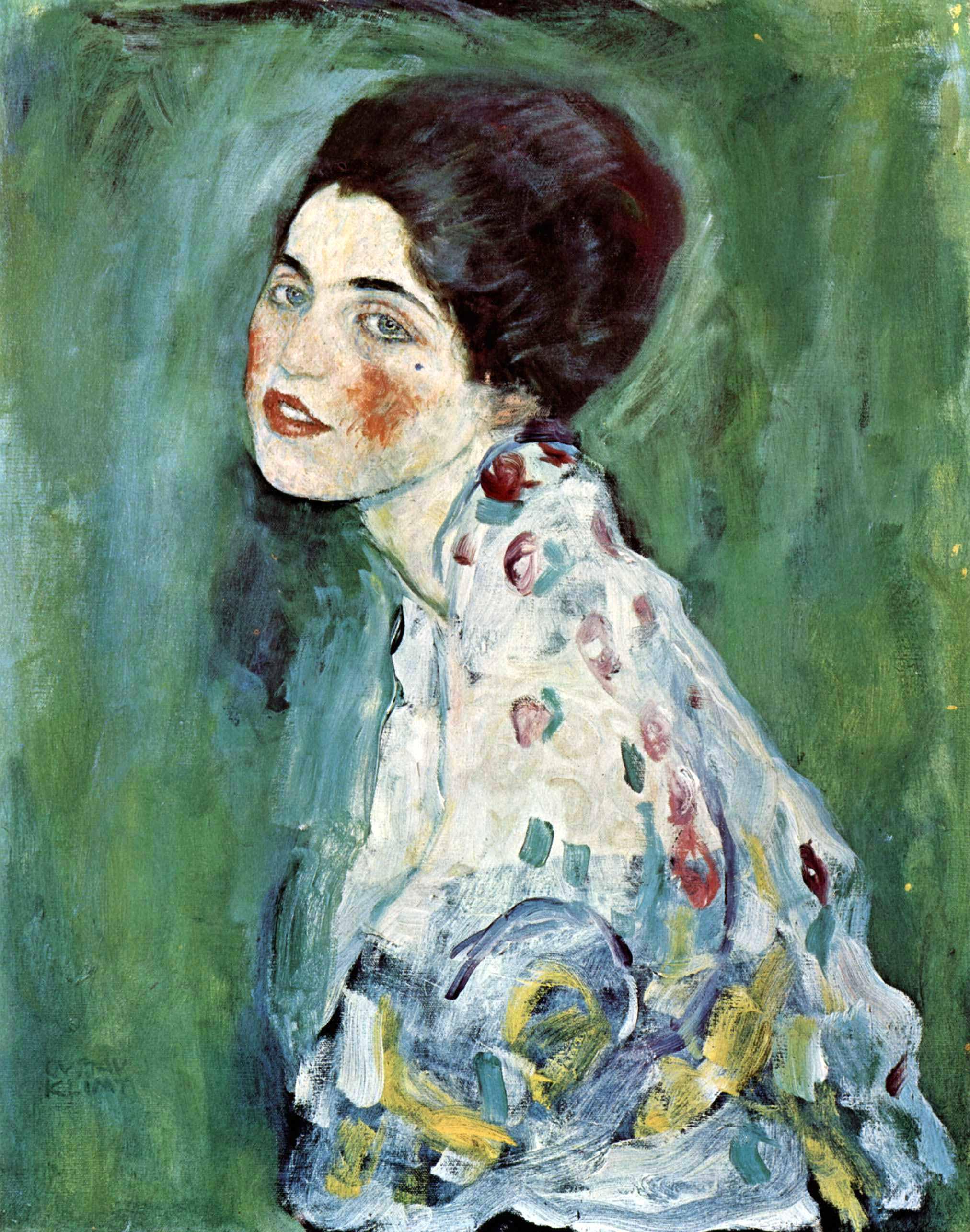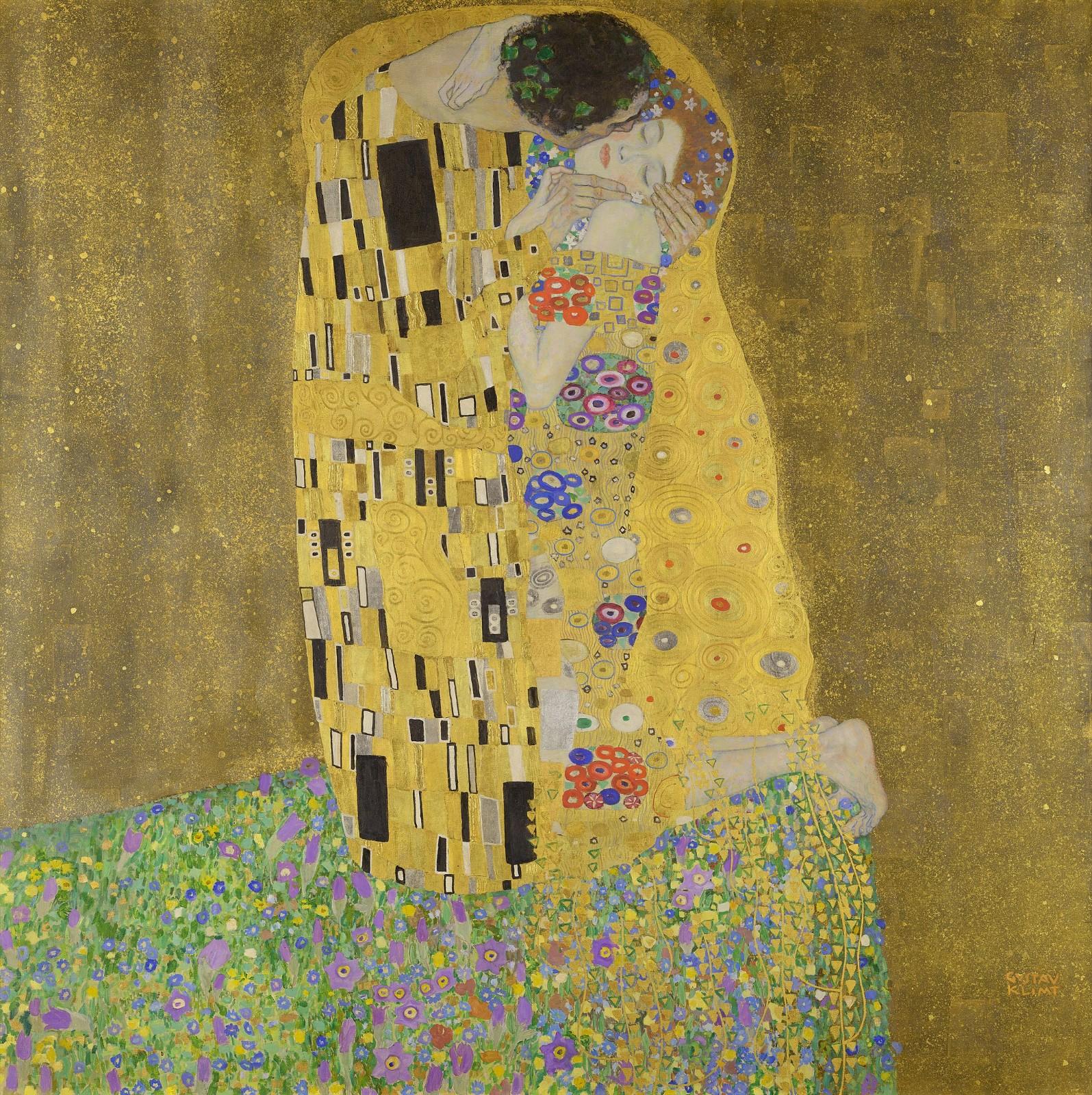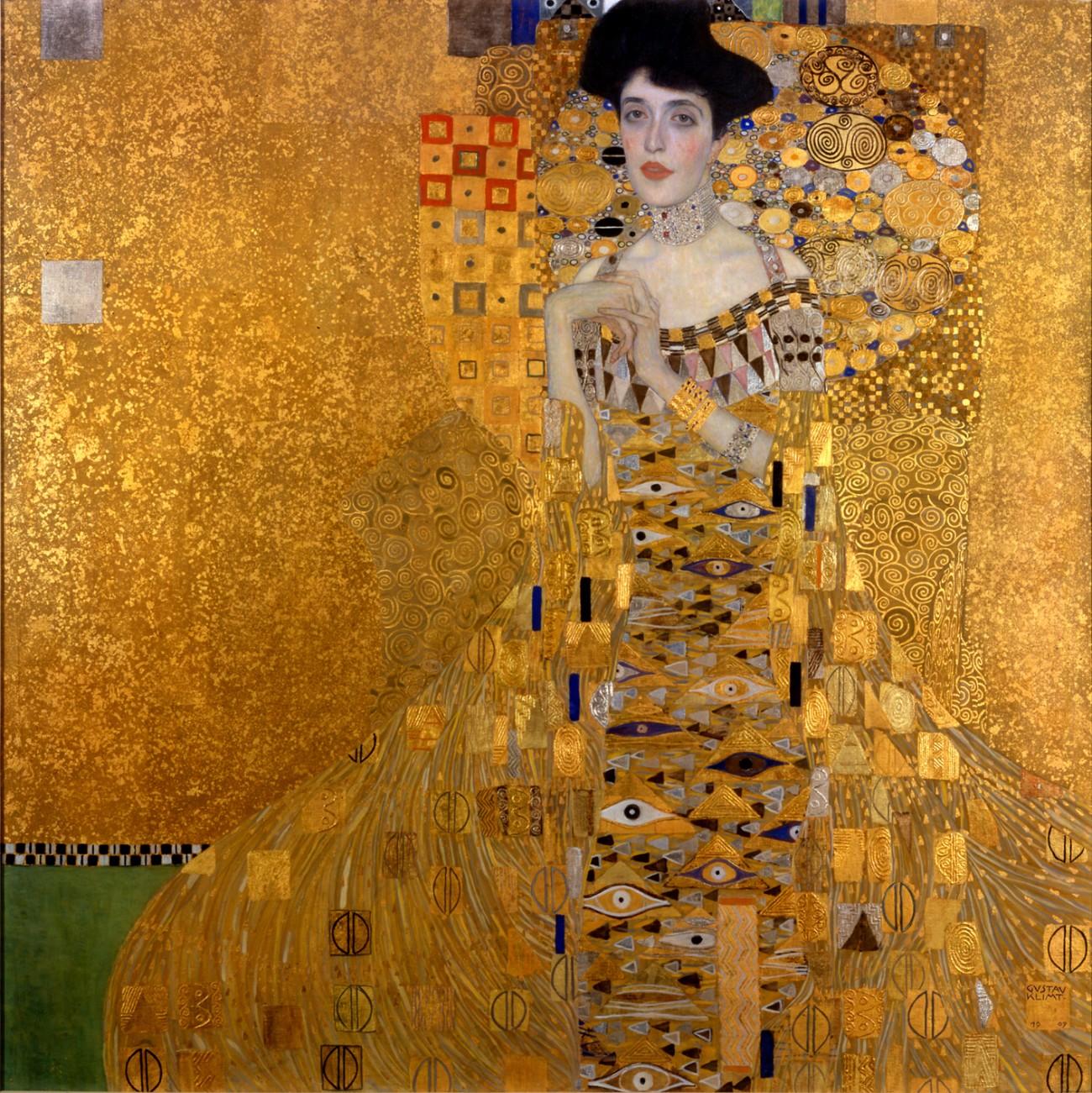For twenty years, investigators searched for clues, while the missing canvas increased in value. In 2014, after years of intrigue but no real clues, the case was reopened. Investigators hoped that advancements in technology would help them locate thieves through a partial fingerprint found on the painting’s frame, but to no avail.
In December, gardeners clearing ivy at the Ricci Oddi Modern Art Gallery made a surprising discovery: a previously unnoticed metal panel hidden in an exterior wall opened to reveal a painting in a bag. They brought it to the museum director, who immediately recognized it as the lost Klimt.
The painting, which the museum had acquired in 1925, is a sensuous, delicate portrait of a young woman that Klimt is said to have had an affair with. Set against a textured green background, the young beauty with rouged lips and cheeks gazes out at the viewer with a come hither glance.
































